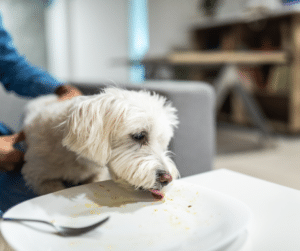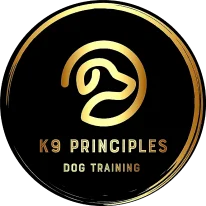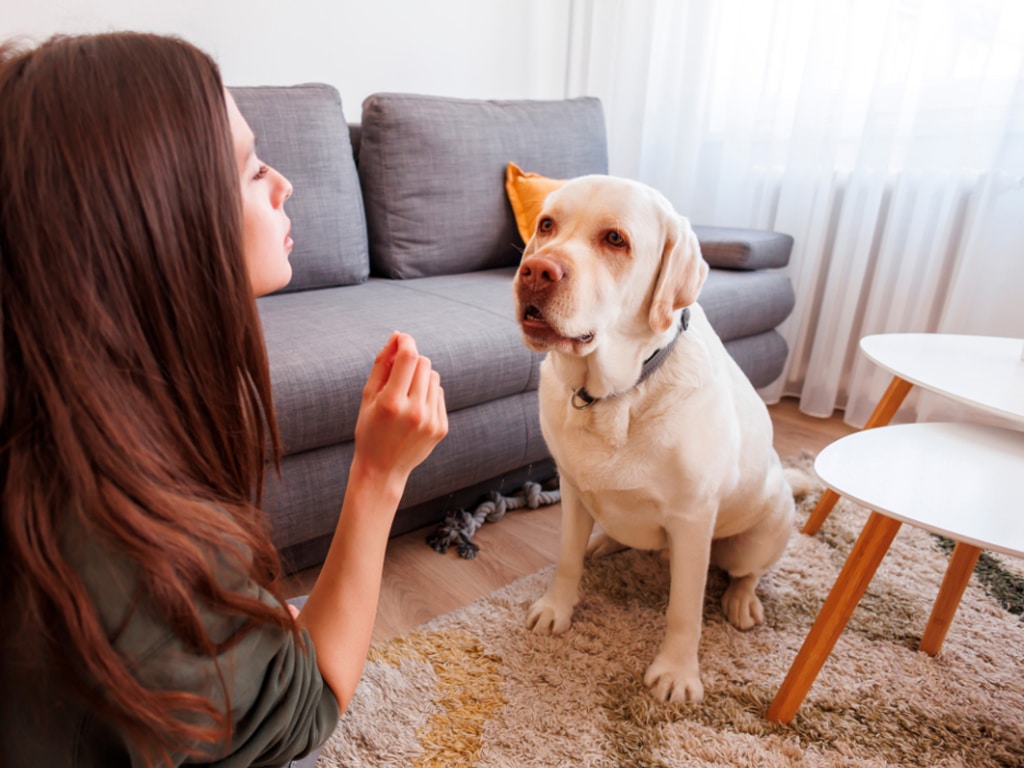Understanding the Four Quadrants of Dog Training: The Ultimate Guide for Beginners
If you’re a first-time dog owner, the world of dog training in Hamilton might feel like a maze of cues, techniques, and theories. The good news? You’re not alone, and you’re already on the right track by diving into this guide. Today, we’re exploring the four quadrants of learning and how they play a massive role in shaping your dog’s behaviour. By the time you’ve finished reading, you’ll feel like you have a map and compass to help your dog become the best version of itself.
Let’s start with the basics. The four quadrants come from a concept known as Operant Conditioning, a framework developed by behavioural psychologist B.F. Skinner. Think of it as a toolbox with four distinct tools: positive reinforcement, negative reinforcement, positive punishment, and negative punishment. Don’t worry if these terms sound a bit academic; we’ll break them down in simple, everyday language and show you how they connect to your journey with Hamilton dog training.
What Are the Four Quadrants of Learning?
Before we dive into how the quadrants work, picture this: you’re teaching your dog to sit. You reward it with a treat when it gets it right, you ignore behaviours that aren’t helpful, and sometimes you may gently correct mistakes. Each action you take falls into one of these four quadrants. Here’s how they break down:
Positive Reinforcement
This is the bread and butter of dog training in Hamilton. Positive reinforcement is all about adding something your dog loves to increase the likelihood of a behaviour. Let’s say your dog sits when you ask. You hand over a tasty treat, offer belly rubs, or dish out a happy “Good boy!” Your dog thinks, “Hey, sitting gets me great stuff. I’ll do that again!” Simple, right?

Positive reinforcement builds trust and enthusiasm in your dog. It’s like getting a pay cheque after a job well done. Who wouldn’t want to keep showing up when the rewards are that good? K9 Principles swears by this approach as the most effective and humane way to teach dogs. Not only does this method make training enjoyable for your dog, but it also strengthens your bond. Imagine your dog looking at you with anticipation and excitement—that’s the magic of positive reinforcement.
Negative Reinforcement

Negative reinforcement might sound less pleasant, but it’s not as scary as it seems. Here, you’re taking something unpleasant away to encourage behaviour. Imagine your dog pulling on the lead during a walk. You add a bit of tension to the leash, and the moment your dog eases off, you release the pressure. Your dog learns that keeping the leash loose is the way to avoid discomfort.
While not used as frequently as positive reinforcement, negative reinforcement can be helpful in specific situations. The trick is to be gentle and consistent. K9 Principles often employs this quadrant when working with more complex behavioural cases in Hamilton dog training sessions. For example, this approach might help a fearful dog build confidence by showing them that calm behaviour can alleviate a stressful situation. It’s about guiding your dog toward success without overwhelming them.
Positive Punishment
Positive punishment involves adding something unpleasant to discourage a behaviour. Picture your dog jumping up on guests at the door. You might use a firm “No!” to let them know this isn’t acceptable. It’s like a gentle reality check, reminding your dog that some actions have consequences.
It’s important to note that positive punishment should be used sparingly and thoughtfully. Overdoing it can lead to fear or confusion, which can hinder progress. That’s why K9 Principles advocates for a balanced approach that prioritises understanding over correction. Positive punishment can be compared to a quick reminder—like touching a hot stove and learning to be more cautious next time. But just like with the stove, it’s crucial not to overdo it.
Negative Punishment
Negative punishment is the flip side of the coin. Here, you’re taking away something your dog enjoys to reduce unwanted behaviour. Let’s say your dog gets too rowdy during playtime. You take the toy away for a few moments, signalling that rough behaviour equals no fun.
This quadrant teaches dogs that good things come with good behaviour. It’s like learning that if you don’t tidy your room, you can’t have dessert. Negative punishment is a valuable tool in the Hamilton dog training toolbox when used with patience and consistency. It’s about showing your dog that there are natural consequences to their actions without being overly harsh.
How Do These Quadrants Shape Dog Training?
Now that we’ve covered the basics, let’s talk about how these quadrants fit into real-life training scenarios. The beauty of this framework is its flexibility. Depending on your dog’s personality and needs, you can lean more heavily on certain quadrants while minimising others. Here’s how it all comes together:
Teaching Good Behaviour
Imagine your dog learning to stay calm when visitors arrive. Positive reinforcement will be your go-to. Every time your dog stays seated instead of jumping, they get a treat or praise. Over time, they’ll associate staying calm with rewards, and the behaviour will stick.
Negative punishment can also play a role here. If your dog gets too excitable, removing attention for a moment helps them realise that calm behaviour keeps the good vibes going. Over time, your dog learns that self-control leads to more rewards, creating a win-win situation for everyone.
Addressing Unwanted Behaviour
Let’s say your dog loves counter-surfing for snacks. Positive punishment, like a firm “Off!”, can be paired with negative punishment by removing access to the kitchen. Your dog learns that jumping up not only earns disapproval but also cuts off the opportunity for treats.

It’s about showing your dog that there are better ways to behave. Over time, with consistent cues and consequences, unwanted behaviours fade away. Remember, training isn’t just about stopping bad behaviour; it’s about replacing it with something better.
Building Confidence
Training isn’t just about stopping bad behaviour; it’s also about helping your dog feel secure and confident. K9 Principles often uses a mix of positive and negative reinforcement to achieve this. For example, a shy dog might be encouraged to explore new environments with gentle guidance and plenty of rewards for bravery. It’s like teaching a child to ride a bike—a bit of encouragement and a steady hand can make all the difference.
Encouraging Long-Term Success
Consistency is the secret ingredient to making the four quadrants work. Dogs thrive on routine and clear expectations. By using these quadrants thoughtfully and consistently, you’re setting your dog up for success. Think of it like learning a new language: repetition, patience, and positive feedback are key to mastery.
Why Is Understanding These Quadrants Important?
Understanding the four quadrants is like learning the language of your dog. Once you know how your actions influence their behaviour, you can communicate more effectively. Plus, it’s a game-changer for building a strong bond based on trust and mutual respect.
As a dog owner in Hamilton, you’re lucky to have access to expert trainers like K9 Principles. Our approach to dog training in Hamilton combines science-backed methods with a deep love for dogs. Whether you’re teaching basic cues or tackling complex behavioural issues, knowing the quadrants gives you the confidence to lead your dog to success.
The K9 Principles Advantage
K9 Principles takes the guesswork out of Hamilton dog training. Our professional dog trainers don’t just teach your dog; they empower you with the knowledge and skills to keep the progress going at home. By blending the four quadrants with personalised strategies, we ensure every dog—and every owner—gets the support they need.
From playful puppies to stubborn seniors, K9 Principles believes that every dog is capable of learning and thriving. Our humane, results-driven approach makes them the go-to choice for dog training in Hamilton.
Conclusion:
Dog training doesn’t have to be overwhelming. By understanding the four quadrants of learning, you’ll have a solid foundation to guide your dog towards positive behaviour. Remember, it’s not about being perfect; it’s about being consistent, patient, and compassionate. Whether you’re using positive reinforcement, negative punishment, or a mix of techniques, the key is to tailor your approach to your dog’s unique needs.
And if you ever feel stuck, K9 Principles is here to help. Our expertise in Hamilton dog training ensures that you and your dog are always on the path to success.
- Name: K9 Principles
- Address: Haldimand County, Greater Hamilton Area, Burlington, and Most of Norfolk County
- Phone: 289 880-3382
- Email: k9principlesinc@gmail.com
- Website: www.k9principles.ca
FAQs
-
A. Positive reinforcement is widely regarded as the most effective and humane quadrant. It builds trust and motivates dogs to repeat desirable behaviours through rewards like treats, praise, or play.






